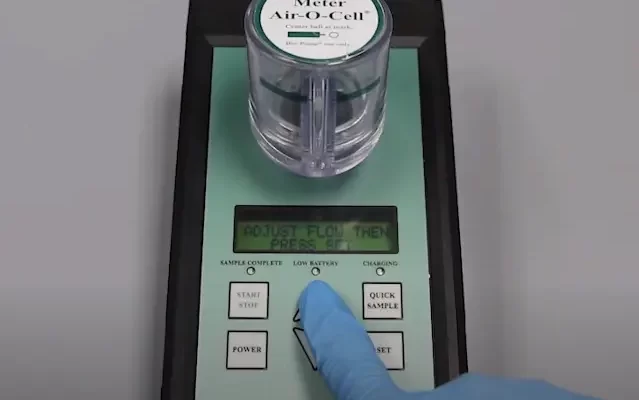Testing for mold in the air is an essential step in ensuring a healthy living environment. While it may not be possible to completely eradicate mold, identifying its presence can help you take necessary measures to control it. If you suspect mold in the air, here are some of the best tools and tips to test for it.
Mold Test Kits
There are various mold test kits available in the market that allow you to collect samples from the air and surfaces. These kits typically include collection plates or strips, swabs, or cassettes along with specific instructions on how to use them. Some kits even come with laboratory analysis options, where you can send the samples for expert analysis. Always make sure to follow the instructions carefully to get accurate results.
Air Sampling Pump
An air sampling pump is a more advanced tool used by professionals to test for mold in the air. It collects air samples which are then analyzed in a laboratory. The pump draws in a specific volume of air, capturing any mold spores present. This method provides a quantitative assessment and can help determine the concentration of mold spores in the air.
Duct Testing
If you suspect mold growth in your HVAC system, testing the air ducts can be a practical approach. Mold spores can easily spread through the air ducts and contaminate the entire space. Professionals use specialized equipment such as air sampling pumps or bioaerosol impactors to collect samples directly from the ductwork. This method helps identify the source and extent of mold contamination within the ventilation system.
Useful Tips
Now, let’s move on to some tips that can help you in testing for mold in the air:
- Choose the right testing method: Depending on your needs, budget, and level of accuracy required, select a suitable testing method. If you’re unsure, consulting with a professional can shed light on the best approach for your situation.
- Follow instructions: Whether you are using a mold test kit or collecting air samples manually, always read and follow the instructions meticulously. Proper technique and handling of samples are vital to obtain reliable results.
- Test multiple locations: Mold spore concentration can vary from room to room. It’s a good practice to test multiple areas, especially those prone to moisture or visible mold growth. Consider testing both indoor and outdoor air to establish a baseline for comparison.
- Seek professional help: If you suspect extensive mold contamination, have health concerns, or want accurate and detailed results, it is advisable to consult a certified mold inspector or industrial hygienist. They possess the expertise and specialized equipment required for comprehensive mold testing and analysis.
Detecting Mold in the Air at Home without Special Devices
Many homes frequently experience mold issues, which can potentially harm your health. Although there are specific devices to detect airborne mold, you can also use simple methods to identify its existence without requiring extra equipment. Here are a few straightforward techniques you can attempt within your own home.
- Visual Inspection:
Visual inspection is an easy method to identify mold. Search for obvious indications of mold growth on surfaces like walls, floors, and ceilings. Focus on areas that are frequently damp, such as bathrooms, kitchens, and basements. Mold typically manifests as black, green, or white stains or patches. Make sure to have adequate lighting when examining your home. - Musty Odor:
Another noticeable sign of the presence of mold is a smell that is musky or similar to that of soil. Mold emits volatile organic compounds (VOCs) that create this specific scent. Walk around various parts of your house and try to identify any unusual odors. Pay extra attention to areas with inadequate air circulation or places that have been affected by water damage in previous instances. - Physical Symptoms:
Mold exposure often causes physical symptoms in individuals. If you or your family members experience unexplainable health issues when at home that improve when you leave, mold might be the culprit. Common symptoms include coughing, sneezing, itchy eyes, throat irritation, headaches, skin rashes, and respiratory problems. Keep a record of these symptoms and their frequency to determine if mold could be the underlying cause. - Humidity and Condensation:
High levels of humidity can contribute to mold growth. Monitor humidity levels in your home by using a hydrometer, which can be purchased inexpensively at most hardware stores. Ideally, indoor humidity should be maintained below 50%. Areas with excessive condensation, like windows or pipes, indicate high moisture content and an increased risk of mold formation. - Allergenic Response:
Some individuals are more sensitive to mold than others, and their allergic reactions can provide clues about mold presence. If you or your family members experience an increase in allergic symptoms while inside your home, such as sneezing, coughing, or itchy eyes, there could be mold in the air. Monitor your symptoms to determine if they coincide with spending time indoors.
It’s important to note that these methods can help you identify the potential presence of mold, but they cannot confirm its existence conclusively. If you suspect mold, it is recommended to consult a professional mold inspector who can conduct more accurate testing and provide appropriate remediation guidance.
Conclusion
You can detect mold in your home even without special equipment by being attentive and observant. By visually examining your surroundings, noticing any musty smells, tracking any physical symptoms, checking humidity and condensation levels, and observing allergic reactions, you can collect important clues that suggest the presence of mold. It is important to seek professional help for accurate testing and guidance on how to get rid of the mold if necessary.
Remember, testing for mold in the air is just the first step. If the test confirms the presence of mold, it is crucial to address the underlying moisture problem and take appropriate remediation measures to eliminate it. Regular monitoring and preventive maintenance can help keep mold at bay and ensure a healthier indoor environment for you and your loved ones.

